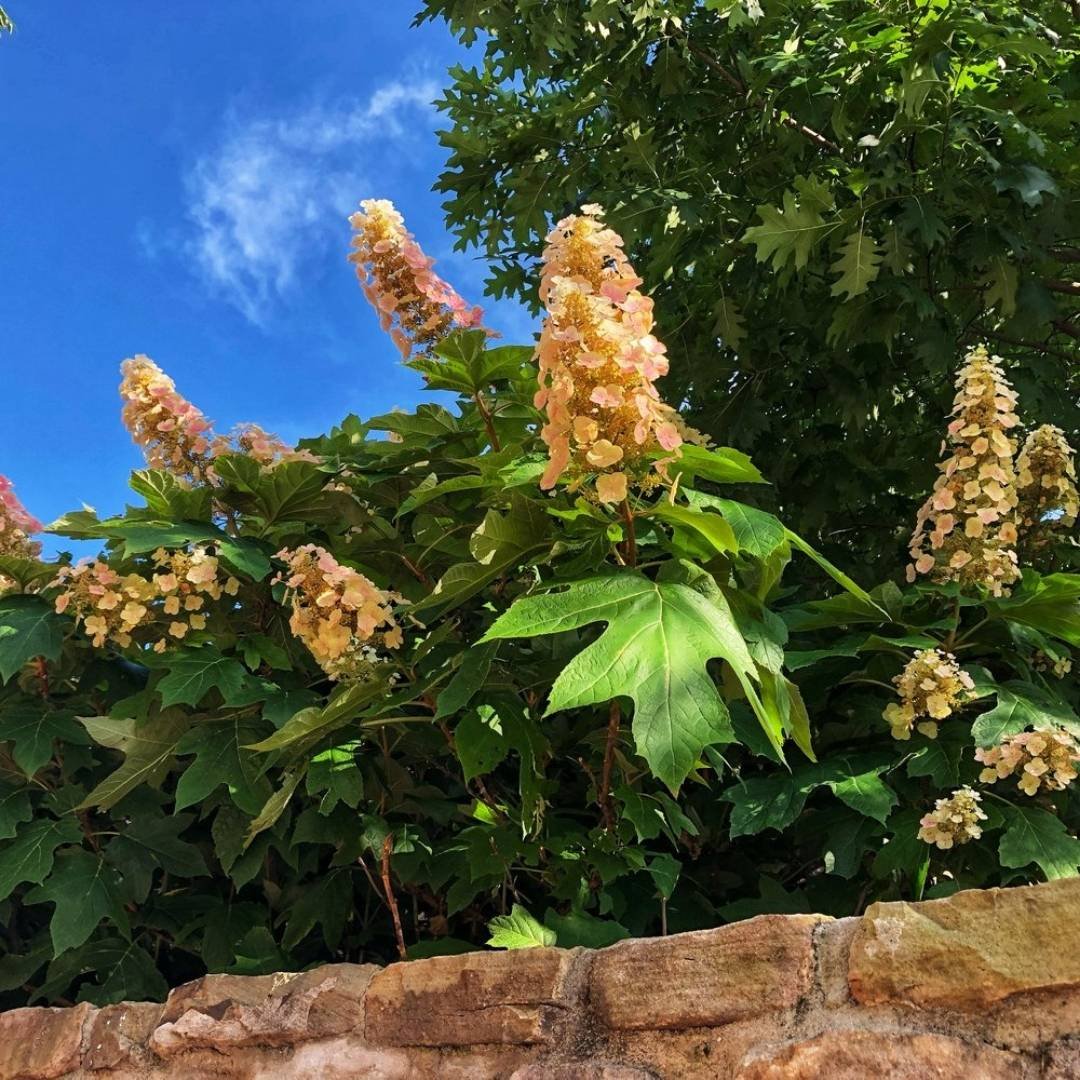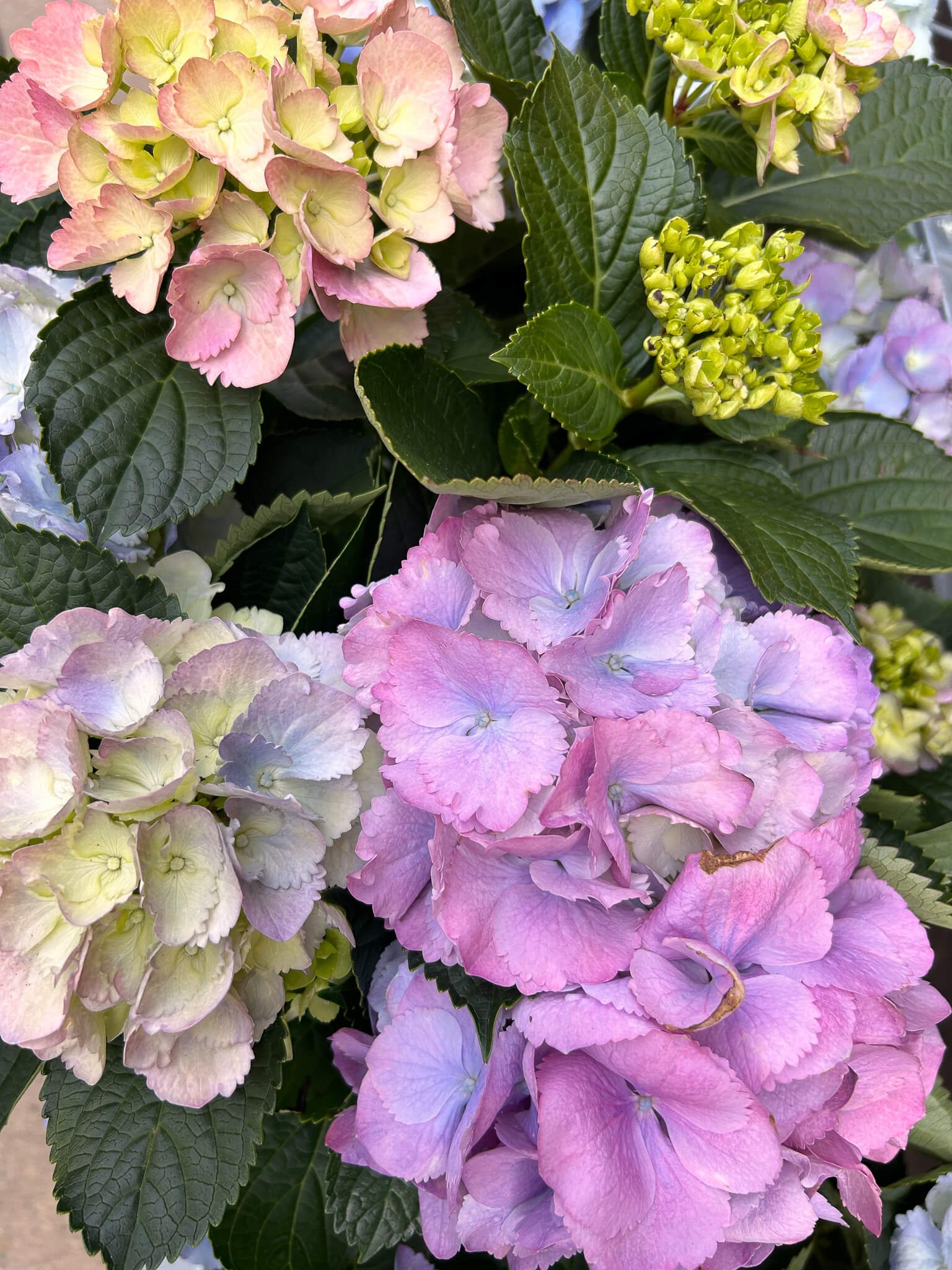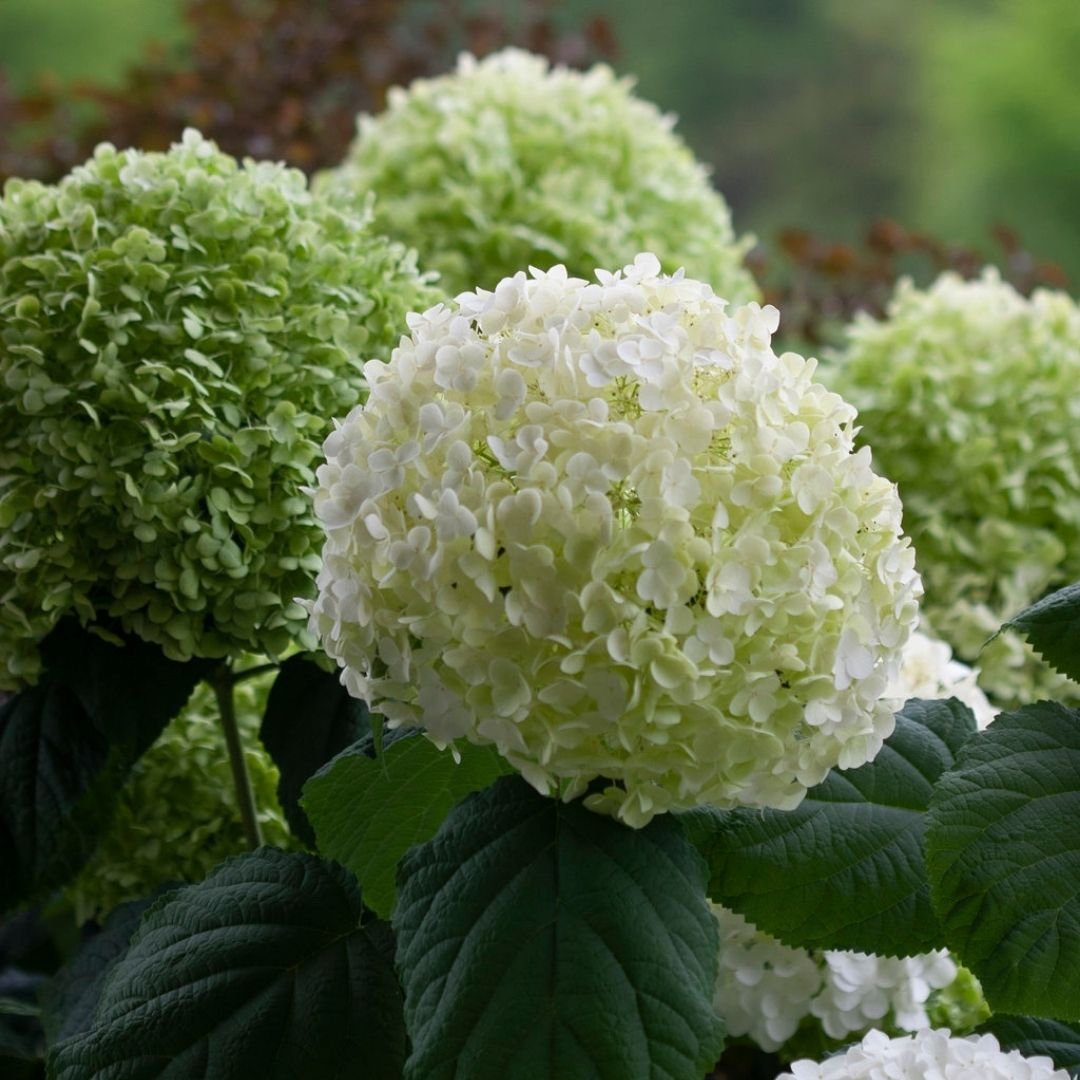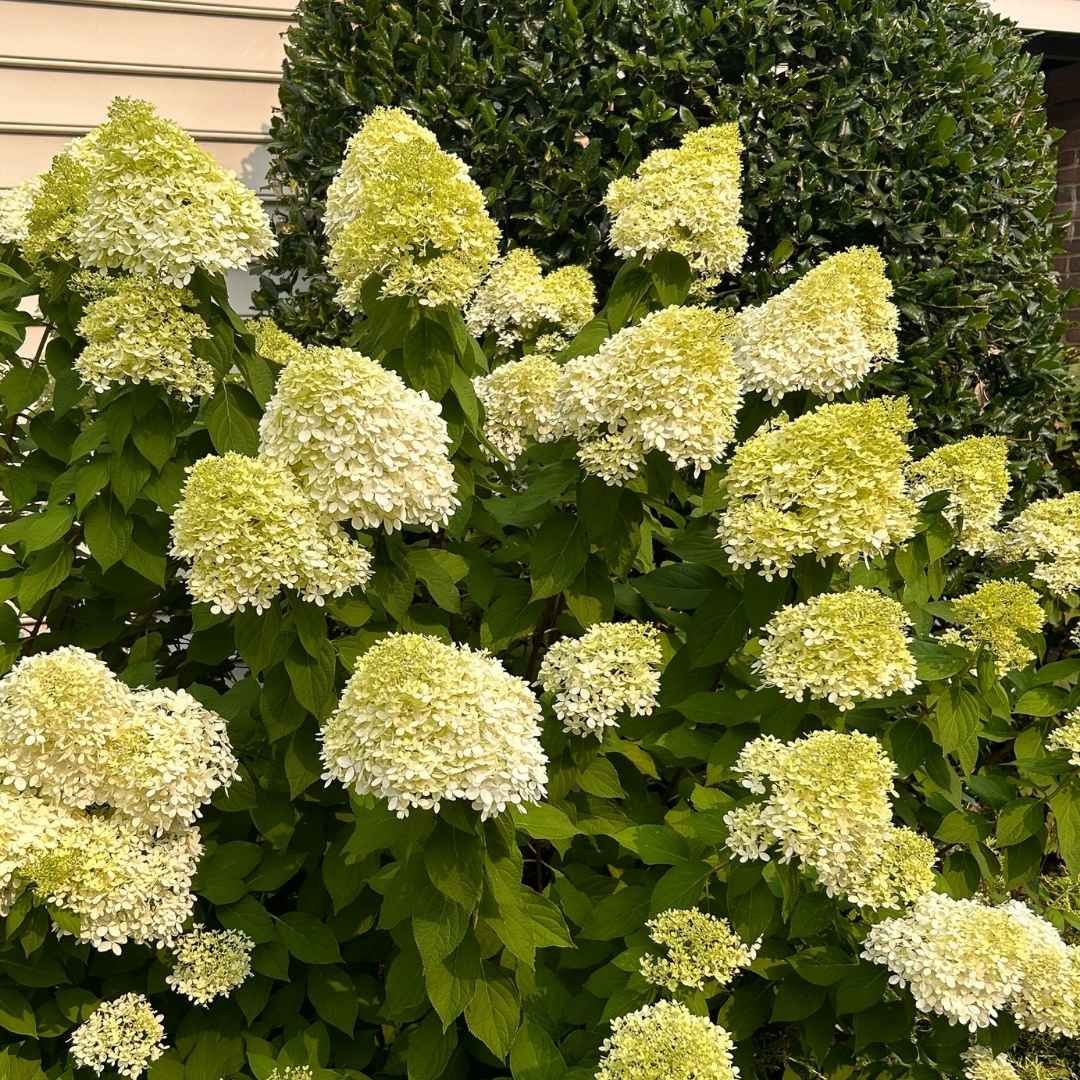Hydrangea Nikko Blue, An Old-Fashioned Fave
Capture the Essence of Front-Porch Summers and Vintage Hydrangea Landscaping
Hydrangea Nikko Blue (Hydrangea macrophylla ‘Nikko Blue’) is a cultivar of the bigleaf hydrangea, a deciduous shrub native to Japan and China belonging to the Hydrangeaceae family.
This classic, old-fashioned hydrangea cultivar is a popular choice, beloved by gardeners for its stunning mophead flowers, which bloom in the summer and can be up to 5 inches in diameter!
Flower color varies, ranging from steel blue to pink, depending on the soil pH. In neutral soils, both blue and pink flowers may be present.
Hydrangea Nikko Blue is a fast-growing hydrangea cultivar, adding up to 24 inches of growth per year and eventually reaching 4-6 feet in height and width.
The cultivar is named for the city of Nikko, Japan - a tourist destination north of Tokyo renowned for its beautiful mountainous landscapes, lakes and waterfalls.
Hydrangea Nikko Blue grows in zones 6-9 and prefers part shade and rich, well-draining soil.
Part shade is important since Nikko Blue is sensitive to intense sun exposure, especially the strong rays of the late afternoon sun.
Hydrangea Nikko Blue can be grown in zone 5 with winter protection. Create a cylinder-shaped wrap around the plants with burlap or chicken wire, and use straw or leaves to fill up the empty space within.
Deer will eat hydrangea flower buds and leaves, especially the tender young growth.
If you would like to grow a flowering shrub that deer tend to leave alone, try Ruby Spice summersweet clethra as a deer resistant alternative to the bigleaf hydrangea.
Read on for Hydrangea Nikko Blue landscaping ideas, as well as suggestions for planting companions!
Hydrangea Nikko Blue has a classic, old-fashioned charm.
How to Plant and Grow Hydrangea Nikko Blue
Planting: The best time of year to plant a Nikko Blue hydrangea is in the spring or fall, giving the roots time to establish before the onset of extreme hot or cold weather. Water deeply immediately after planting.
Location: Choose a location with well-drained soil that is rich in organic matter. Nikko Blue hydrangeas prefer soil that retains moisture but does not become waterlogged. Select a spot with partial shade and protection from the intense afternoon sun.
Soil: Amend the soil with organic matter, such as compost, shredded leaves, or Leaf-gro® to improve drainage and soil fertility. If you would like your Nikko Blue hydrangea to bloom specifically pink or blue, consider getting a soil test and adding either sulfur or lime to the soil. Add sulfur for blue flowers and lime for pink blooms.
Mulch: Apply a layer of organic mulch around the base of the plant to retain soil moisture, regulate temperature, and suppress weeds. Make sure the mulch does not touch the base of the plant.
Watering: Keep the soil consistently moist but not waterlogged, especially during periods of drought. Deep watering is preferable to encourage the development of a strong root system (Are you in a drought? Check the U.S. Drought Monitor).
Fertilization: Hydrangeas typically do not need fertilization when they are given the rich, fertile soil they prefer. Each spring, spread a layer of compost, shredded leaves or Leaf-gro® around the base of your hydrangea, being careful to keep away from the base of the shrub.
Pruning: Nikko Blue hydrangeas grow buds in late summer and fall on old wood - consequently, pruning should be done in early to mid-summer, immediately after flowering. No more than 1/3 of the plant should be cut back.
Pest and Diseases: Nikko Blue hydrangeas are prone to damage from late spring frosts - leaves and buds can appear scorched, black and burnt. Fungal diseases such as powdery mildew, cercospora leaf spot and anthracnose can also affect these shrubs. Cottony camellia scale is an occasional pest problem. Ensure good air circulation around your plants to minimize the risk of disease, and practice good watering habits (see “How to Water your Plants” to brush up on your watering skills).
Why Isn’t My Hydrangea Nikko Blue Flowering?
The buds of Hydrangea Nikko Blue, like those of many other bigleaf hydrangea varieties, can be susceptible to damage from extreme weather conditions.
Cold weather damage to a hydrangea can range from minor to severe, and can look like shriveled brown or black leaves and buds and drooping, wilting flower heads.
Late Spring Frosts: One of the primary risks is exposure to late spring frosts. Nikko Blue hydrangea buds are formed on old wood, and if a late frost occurs after the buds have emerged, it can damage or kill them, leading to either reduced or no flowering for the rest of the summer.
Freezing Temperatures: Extremely low temperatures, especially in winter or early spring, can also damage the buds. Prolonged exposure to freezing temperatures can cause the buds to freeze and become more susceptible to damage.
Unseasonal Temperature Fluctuations: Drastic fluctuations in temperatures during the bud development stage can be harmful. Warm periods followed by sudden cold snaps can disrupt the normal development of buds, potentially leading to bud damage.
Does Hydrangea Nikko Blue Bloom on Old or New Wood?
Hydrangea Nikko Blue blooms on old wood. Flower buds for the summer season have developed on the previous year's growth.
This shrub generally does not need pruning, but if you must prune your Nikko Blue hydrangea, it should be done after it has finished blooming for the year and before the next season's buds begin to form.
Pruning too late can risk removing the buds, potentially affecting the plant's blooming performance for the following season.
To put this in context of the seasonal gardening calendar:
Spring - buds have been set the previous year, so don’t prune! However, you may remove and clean out old, dead, or weak stems. You can tell which stems are dead by scratching away at the surface of each stem. If you see green, it’s a living stem and you should be left alone. If you see more brown, it’s dead and can be safely pruned away.
Summer - the shrub is flowering, enjoy the show! When flowering has finished, you have a small window of time to prune the shrub, if needed, before late summer. Flower buds develop starting in late summer - fall. Complete your pruning prior to late summer.
Fall - buds are forming for next spring’s flowering show - don’t prune! You do not need to prune back Nikko Blue hydrangeas in the fall.
Winter - buds are set for the springtime - don’t prune!
Does Hydrangea Nikko Blue Like Sun or Shade?
Hydrangea Nikko Blue thrives in part shade and does best with 2-4 hours of sunlight per day, preferably dappled or filtered light with protection from afternoon sun.
In hot climates, providing them with morning sun and afternoon shade can help prevent their flowers and leaves from wilting and scorching.
In cooler regions, they may tolerate more sun, but protection from harsh afternoon sunlight is still recommended.
Planting Companions for Hydrangea Nikko Blue
Feeling inspired to plant a Nikko Blue hydrangea in your garden? Here are some ideas for planting companions.
All favor the same partial shade conditions and moist, rich, well-draining soil that bigleaf hydrangeas love:
NewGen Independence® Boxwood (Buxus NewGen Independence® ‘SB 108’): The small evergreen leaves and structured shape of boxwoods are the perfect foil for the larger leaves and loose form of the Nikko Blue hydrangea. NewGen Independence® has a rounded habit and improved resistance to boxwood leafminer.
Cavatine Japanese Andromeda (Pieris japonica ‘Cavatine’): Striking evergreen leaves and delicate, bell-shaped white flowers contrast nicely with the large leaves of Nikko Blue.
Delaware Valley White Azalea (Rhododendron ‘Delaware Valley White’): The white flowers and dark green foliage of this evergreen azalea won’t clash with the blue or pink flowers of Nikko Blue.
Tater Tot® Arborvitae (Thuja occidentalis 'SMNTOBABA’ Tater Tot®): A row of these petite, 12-24 inch high globe-shaped evergreens can be planted in front of a row of Nikko Blue hydrangeas, creating a pleasing textural contrast.
Astilbe (Astilbe species): The fine textured foliage and spiky summer flowers of astilbe are the perfect partner for a Nikko Blue hydrangea. White varieties like ‘Deutschland’ look particularly nice.
Golden Variegated Hakone Grass (Hakonechloa macra ‘Aureola’): Striking, fine-textured foliage contrasts nicely with the large leaves and globe-shaped flowers of Nikko Blue.
Obsidian Coral Bells (Heuchera ‘Obsidian’): The dark purple, almost black leaves of this coral bells hybrid play up the blue to pink flowers of Nikko Blue hydrangea.
Japanese Painted Fern (Athyrium niponicum 'Pictum'): Dramatic blue-green-silver foliage, a short stature and spreading form make this a great choice for underplanting a Nikko Blue hydrangea.
Hydrangea Nikko Blue needs protection from the hot afternoon sun.
Landscaping Ideas for Hydrangea Nikko Blue
Foundation Planting: Plant Nikko Blue hydrangeas along the foundation of your home. Their lush green foliage and colorful blooms will enhance the curb appeal of your home.
Mixed Borders: Create a mixed border planting by combining Nikko Blue hydrangeas with other complementary plants. Consider pairing with perennials, ornamental grasses, and evergreen shrubs for four seasons of visual appeal.
Mass Planting: Plant Hydrangea Nikko Blue in groups to create a mass of color. This approach works well in large garden beds or along pathways or fences, providing a striking visual impact.
Woodland Garden: The dappled shade underneath the canopy of tall trees is an ideal spot for Hydrangea Nikko Blue. Combine with other partial-shade loving plants like camellias, Japanese andromeda, azaleas, and rhododendrons.
Accent Planting: Use Hydrangea Nikko Blue as a focal point in the landscape. Plant strategically to draw attention to specific areas of the garden, like entryways, water features, pathways, or seating areas.
Vintage Cottage Garden: For a charming, informal look, plant a Nikko Blue hydrangea alongside old-fashioned cottage garden favorites like foxgloves, garden phlox, hollyhocks, catmint, hibiscus, and roses.
How to Change the Color of Hydrangea Nikko Blue
You can change the color of your hydrangea blooms by manipulating the pH of the soil.
The pH level affects the availability of aluminum in the soil, in turn influencing the color of hydrangea flowers.
Adding aluminum sulfate, garden sulfur, or organic matter makes the soil more acidic and will turn the color of Hydrangea Nikko Blue flowers an intense steel blue.
In neutral soils, both blue and pink flowers may be present on the plant at the same time.
Adding garden lime raises the soil pH and turns blooms pink. Be patient - it can take months for change to become evident!
Is Hydrangea Nikko Blue Poisonous to Dogs?
Hydrangea Nikko Blue, like all hydrangea shrubs, contains compounds that can be toxic to dogs if ingested, specifically cyanogenic glycosides.
These compounds can release cyanide when broken down in the digestive system.
However, the level of toxins in bigleaf hydrangeas are relatively low, and instances of dogs getting poisoned by consuming these plants are rare.
While the risk of severe poisoning is low, it’s important to monitor your dog's behavior in outdoor spaces.
If you suspect your dog has ingested a toxic plant, seek immediate veterinary care or contact the Pet Poison Hotline.
Read “Which Plants are Toxic to Dogs” for more information on plants poisonous to dogs..






















Bring drama to your garden with dark foliage and mophead blooms!